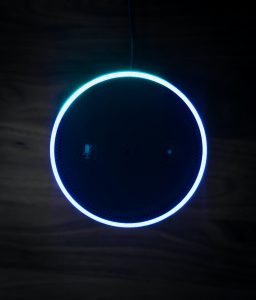Are you looking to cut down on your energy bills and reduce your carbon footprint? One of the most effective ways to achieve this is by using a smart thermostat in your home. By allowing you to control the temperature of your home remotely and adjust it based on your schedule, smart thermostats can help you save a significant amount of energy and money. In this guide, we will show you how to optimise the use of smart thermostats to maximise your energy savings without compromising your comfort.
Key Takeaways:
- Programming your smart thermostat is crucial for maximising energy savings. Set a schedule that aligns with your daily routine and make use of the device’s adaptive learning features.
- Take advantage of remote access to adjust the temperature in your home from anywhere. This allows you to conserve energy when you’re away and ensure comfort upon your return.
- Utilise energy usage reports provided by your smart thermostat to identify patterns and make informed adjustments to your heating and cooling preferences.
- Think about how you can integrate your smart thermostat with other smart devices to further increase energy efficiency. Consider connecting it with your smart lighting, blinds, or even your voice-controlled assistant.
- Regularly update your smart thermostat’s firmware to ensure it runs efficiently and takes advantage of the latest energy-saving features.
Understanding Smart Thermostats
Smart thermostats are innovative devices that can help you optimise your energy usage and reduce your utility bills. These modern thermostats can be controlled remotely via smartphone apps and offer a range of features designed to enhance your home’s energy efficiency.
How Smart Thermostats Work
Smart thermostats work by using sensors to monitor the temperature in your home and adjusting the heating or cooling system accordingly. They can learn your habits and preferences over time, making automatic adjustments to ensure that your home is always at the optimal temperature. You can also control them manually through an app on your phone, giving you the flexibility to modify settings even when you’re not at home.
Key Features and Technologies
Smart thermostats come with a variety of key features and technologies that set them apart from traditional thermostats. These may include geofencing, learning capability, remote access, usage reports, and integration with smart home systems. This means that you can have greater control over your heating and cooling, while also receiving valuable insights into your energy usage. This can ultimately enable you to make more informed decisions about how you use energy in your home.
“`
Pre-Installation Considerations
Compatibility with Your Heating and Cooling System
Before you purchase a smart thermostat, it’s important to check if it is compatible with your existing heating and cooling system. Some smart thermostats work with most systems, including central heating, electric baseboard, and radiant floor systems, while others may require a specific type of system to function optimally. Make sure to research and check the compatibility of the smart thermostat with your system to avoid any issues after installation.
Factors to Consider Before Purchase
Before purchasing a smart thermostat, there are several factors to consider to ensure you make the right choice for your home. Firstly, you need to consider the compatibility of the smart thermostat with your existing heating and cooling system. You should also take into account the smart features that the thermostat offers, such as remote access, geofencing, and learning capabilities. Additionally, you should consider the installation process – whether you’re comfortable installing it yourself or would require professional help. This is particularly important if your system has a high-voltage setup. Lastly, consider the user interface and whether it aligns with your preferences. This will ensure that you find a smart thermostat that meets your specific needs and maximises your energy savings. This will ensure that you find a smart thermostat that meets your specific needs and maximises your energy savings. This will ensure that you find a smart thermostat that meets your specific needs and maximises your energy savings.
“`
Installation and Setup
Before you can start enjoying the energy-saving benefits of a smart thermostat, you first need to install and set it up in your home. This process may seem daunting at first, but with the right guidance, it can be a relatively straightforward task.
Step-by-Step Installation Guide
When it comes to installing your smart thermostat, it’s important to follow the manufacturer’s instructions carefully. Here is a simple step-by-step guide to help you through the process:
| Step | Instruction |
| 1. | Turn off power to your HVAC system at the breaker. |
| 2. | Remove your old thermostat and label the wires. |
| 3. | Install the new mounting plate and connect the wires. |
| 4. | Attach the smart thermostat to the mounting plate. |
| 5. | Turn the power back on and follow the setup instructions on the thermostat. |
Tips for Optimizing Your Smart Thermostat Settings
When it comes to getting the most out of your smart thermostat for energy savings, there are a few key tips to keep in mind. Firstly, be sure to take advantage of the scheduling feature, allowing you to adjust temperature settings based on your daily routine. Additionally, make use of the geofencing feature to automatically adjust the temperature when you leave or return home. Finally, consider integrating your smart thermostat with other smart home devices for enhanced control and energy efficiency. The more you can tailor your thermostat settings to your lifestyle, the more you can maximise your energy savings. The possibilities are endless, and with careful planning, you can significantly reduce your energy consumption and costs.
- Scheduling: Adjust temperature settings based on your daily routine.
- Geofencing: Automatically adjust temperature when you leave or return home.
- Integration: Integrate with other smart home devices for enhanced control.
Maximizing Energy Savings
Now that you have installed a Smart Thermostat, it’s time to learn how to maximize its energy-saving potential. By effectively using the features of your smart thermostat, you can significantly reduce your energy consumption and lower your utility bills.
How-To: Create Effective Schedules and Routines
Creating an effective schedule and routine with your smart thermostat is crucial for maximizing its energy-saving capabilities. By programming the thermostat to adjust the temperature at specific times of the day, you can ensure that you are not wasting energy when no one is home or when you are asleep. This way, you can save money on heating and cooling costs without sacrificing your comfort.
Tips for Maintaining Your Smart Thermostat
Maintaining your smart thermostat is essential for its proper functioning and longevity. Here are a few tips to ensure that your smart thermostat remains efficient:
- Regularly check and replace the batteries to avoid malfunctions.
- Keep the thermostat clean and free from dust and debris for accurate readings.
- Update the thermostat’s software to benefit from the latest energy-saving features.
Assume that a well-maintained smart thermostat can help you reduce your energy consumption significantly over time. With these maintenance tips, you can ensure that your smart thermostat continues to operate at its optimal level, ultimately leading to maximum energy savings.
Additional Smart Thermostat Functions
Aside from the basic temperature control feature, smart thermostats offer a range of additional functions that can further enhance your energy savings and overall comfort. By taking advantage of these advanced features, you can truly maximise the benefits of your smart thermostat.
Integrating with Other Smart Home Devices
One of the key advantages of smart thermostats is their ability to integrate with other smart home devices, such as smart lights, smart plugs, and even smart locks. By connecting your thermostat to these devices, you can create a more seamless and efficient home environment. For example, you can set your thermostat to automatically adjust the temperature when you leave the house, or have it work in conjunction with your smart lights to create a more energy-efficient and comfortable living space.
Understanding Energy Reports and How to Use Them
Most smart thermostats come with the capability to generate energy reports that give you detailed insights into your heating and cooling usage. These reports can show you when and how much energy you are using, and provide recommendations on how to optimise your usage for greater efficiency. By regularly reviewing your energy reports, you can identify patterns and make informed decisions about how to adjust your thermostat settings for maximum energy savings.
Troubleshooting and Maintenance
Even the most advanced smart thermostats can experience issues from time to time, but with regular maintenance and troubleshooting, you can keep your system running smoothly. Here are some tips for addressing common problems and knowing when to seek professional help.
Common Issues and How to Solve Them
If you find that your smart thermostat is not responding or is displaying an error message, the first thing to do is to check the batteries and replace them if needed. You should also ensure that the thermostat is properly connected to your Wi-Fi network and that the settings are correctly configured. If the issue persists, try rebooting the thermostat by turning off the power and turning it back on after a few minutes. In some cases, a software update may be necessary to resolve any bugs or glitches.
When to Seek Professional Help
While many issues can be resolved with a bit of troubleshooting, there are certain situations where it’s best to seek professional help. If you notice that your smart thermostat is heating or cooling your home inconsistently, or if it’s making strange noises, it’s important to have a qualified technician inspect the system. Additionally, if you suspect a wiring issue or if the thermostat is not responding to any troubleshooting attempts, it’s crucial to seek professional help to avoid any potential safety hazards or further damage to the unit.
Conclusion: How to Use Smart Thermostats for Energy Savings
With this in mind, you now have the knowledge and tools to effectively use smart thermostats to save energy and reduce your utility bills. By understanding how to properly program and use your smart thermostat, you can take control of your home’s energy usage and maximise its efficiency. Additionally, by utilising the energy-saving features of your smart thermostat, you can make a significant impact on your overall energy costs, as discussed in this insightful article about how much a smart thermostat will save on energy costs. By implementing these tips and making the most out of your smart thermostat, you can create a more environmentally friendly and budget-conscious home.
FAQ
Q: What are smart thermostats?
A: Smart thermostats are advanced heating and cooling devices that can be controlled remotely through a smartphone or a computer. They are designed to help users save energy and improve their home comfort.
Q: How do smart thermostats help in saving energy?
A: Smart thermostats can be programmed to automatically adjust the temperature based on your schedule and preferences. They also offer features like geofencing and learning algorithms to optimise energy usage, resulting in potential savings on your energy bills.
Q: Are smart thermostats easy to install?
A: Most smart thermostats are designed for easy installation and come with step-by-step instructions. However, if you are uncertain, it’s best to hire a professional to ensure a safe and proper installation.
Q: Can smart thermostats work with any heating and cooling system?
A: Smart thermostats are compatible with most heating and cooling systems, including central HVAC systems, heat pumps, and radiant heaters. However, it’s important to check the compatibility of the specific smart thermostat with your system before making a purchase.
Q: Do smart thermostats require an internet connection?
A: Yes, smart thermostats require a Wi-Fi connection to access remote control and smart features. Without an internet connection, you can still use the thermostat manually, but you won’t be able to take advantage of its advanced capabilities.









